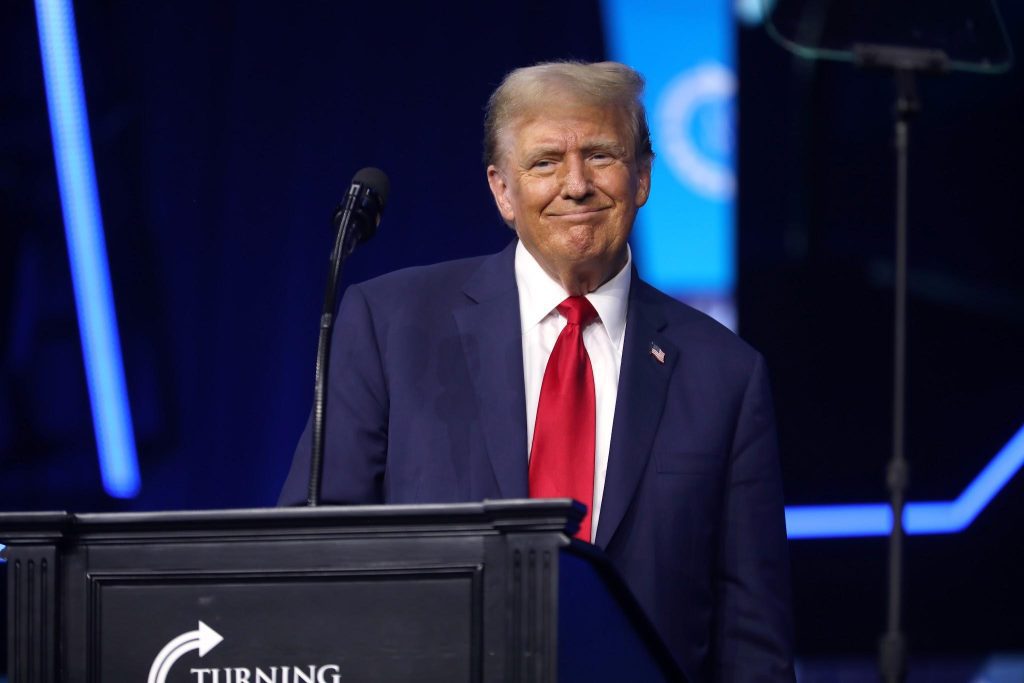Bitcoin went through a dramatic price swing earlier this week in response to a major trade policy announcement from former U.S. President Donald Trump. The cryptocurrency initially climbed to a record-breaking high of $88,000 on April 2 but quickly reversed course, dropping to $82,000 before settling near $83,000 a day later.
This swift and unpredictable movement sent ripples across the entire crypto market. By April 3, overall market capitalization for digital assets had dropped by more than 4%, with top altcoins like Ethereum and Solana registering losses of over 6%. For both, the decline marked their lowest price points in months.
Investors React to Political Clarity
According to financial experts, the sudden tariff declaration—while sparking a knee-jerk market reaction—also introduced a level of policy certainty that some investors found reassuring. In fact, many believe that this clearer economic direction may encourage increased involvement from institutional players who had previously stayed on the sidelines due to market ambiguity.
Historically, institutional investors have been cautious about entering the highly volatile crypto space, especially during periods of political tension or economic instability. But with Trump’s new trade policy offering some insight into future U.S. economic posture, there’s growing belief that major financial firms may begin to see Bitcoin as a viable long-term asset rather than a risky speculation.
Surge in Bitcoin ETF Activity Signals Renewed Confidence
Adding to this sentiment, Bitcoin-based exchange-traded funds saw a sudden spike in capital inflows. On April 2 alone, these funds attracted a combined $218 million in fresh investment—marking a significant rebound from previous days of sustained outflows.
Leading the pack was BlackRock, whose spot Bitcoin ETF continues to draw attention from institutional clients. The robust inflow is seen by market watchers as a strong indicator of renewed confidence, particularly among professional investors seeking exposure to crypto without directly holding digital assets.
The sharp reversal in ETF trends is widely interpreted as a signal that Bitcoin’s long-term value proposition remains intact—even amid regulatory scrutiny and policy shifts. It also hints at a maturing market structure, with ETFs acting as stabilizing tools in an otherwise volatile environment.
Debates Over the Role of Institutional Capital
Despite the optimism, not everyone agrees that institutional involvement is a silver bullet for price stability. Thomas Perfumo, Head of Strategy at Kraken, pushed back against the idea that corporate money necessarily tames Bitcoin’s volatility. Instead, he argued that wild price swings reflect natural demand fluctuations in a market built on scarcity and innovation.
Perfumo emphasized that Bitcoin, by design, is a limited asset with a fixed supply, making it susceptible to dramatic movements when demand surges or dips. He added that the presence of institutional capital may increase liquidity but won’t eliminate the boom-and-bust nature of crypto cycles.
This perspective is echoed by some economists who believe that market volatility is not a weakness but rather a sign of active price discovery in a rapidly evolving asset class.
Was the Market Overreacting?
Several analysts have described the recent pullback as an overcorrection driven by political uncertainty rather than fundamental weakness. They pointed out that Bitcoin’s underlying metrics remain strong, including active addresses, hash rate, and adoption among traditional financial institutions.
Moreover, the speed of the recovery—from a low of $82,000 back to $83,000 within 24 hours—has been cited as evidence of resilience. Bitcoin’s ability to rebound from policy-driven dips has been observed in past events, such as during the Federal Reserve’s rate hike cycles or the 2023 U.S. banking crisis.
These patterns suggest that while Bitcoin is prone to external shocks, its core value proposition as a decentralized store of wealth remains attractive to long-term holders.
Market Sentiment: Watchful but Constructive
Though the ETF inflows and quick recovery have given traders a reason to stay hopeful, many still remain cautious. The global investment community is paying close attention to broader macroeconomic conditions, particularly U.S. interest rate decisions, inflation trends, and the future direction of trade relations under a potential Trump presidency.
Altcoins, meanwhile, are feeling the heat more intensely. With Ethereum and Solana struggling to maintain support levels, capital appears to be flowing out of secondary assets and back into Bitcoin—a trend known as Bitcoin dominance. This typically happens when investors seek safer positions during times of heightened uncertainty.
While the rest of the crypto market may take longer to recover, Bitcoin continues to act as a bellwether for digital asset sentiment and momentum.
Outlook: Can Bitcoin Reach the $90,000 Mark?
Despite the latest volatility, a number of analysts remain confident that Bitcoin could still climb toward the $90,000 threshold in the near term. Several factors are contributing to this belief: increasing institutional participation via ETFs, growing clarity around global policy, and a consistent narrative of Bitcoin as a hedge against inflation and economic instability.
Looking slightly further ahead, the next Bitcoin halving event—expected around mid-2025—is also fueling long-term bullish projections. The halving will reduce the block reward for miners, effectively cutting the rate of new Bitcoin issuance in half. Historically, these events have preceded major bull runs, as reduced supply meets rising demand.
Experts warn, however, that external conditions such as regulation, global economic performance, and geopolitical conflicts could still derail upward momentum. Still, if current patterns continue, Bitcoin could very well surpass its all-time high and reach the $90,000 milestone before the year ends.
Final Thoughts
In summary, Bitcoin’s recent price action has been a rollercoaster, shaped by geopolitical developments, ETF activity, and investor psychology. The dramatic rise and fall triggered by Trump’s tariff announcement shows how sensitive the crypto market remains to external news, but also highlights Bitcoin’s ability to bounce back quickly in the face of uncertainty.
The influx of institutional capital, led by major players like BlackRock, is a promising sign that Bitcoin is being taken more seriously as a long-term asset class. However, the debate around whether this will lead to lasting stability remains unresolved.
For now, Bitcoin continues to demonstrate its dual identity—as both a highly volatile trading instrument and a digital fortress for those seeking an alternative to traditional finance. Whether or not it hits $90,000 in the coming months, its growing role in the global financial system is becoming harder to ignore.












